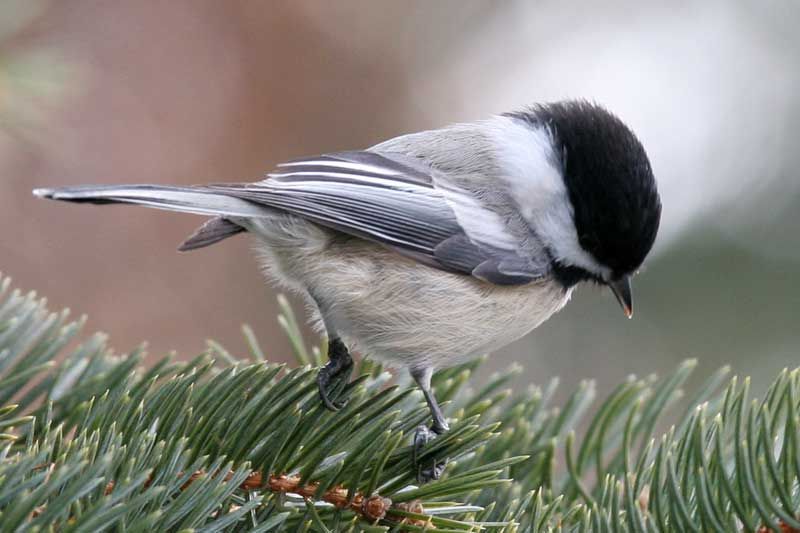Lorraine Julien | Nov 16, 2016
This is a busy time of year for birds and animals. I recently observed some squirrel activity that was really unusual so I wanted to share the little story in case anyone else has observed the same thing.
During October we did get some much needed rain and towards the end of the month, fungi of all types were popping up all over. I didn’t realize that squirrels ate some of these fungi until we saw some strange behaviour. At my brother’s cottage, there is a covered deck on which stands a little tree about 3 feet high in a pot. On arriving at their cottage, my brother and his wife noticed the little tree was covered in what appeared to be large mushrooms. They immediately thought someone was playing a joke on them until they happened to notice a red squirrel running around with a mushroom in its mouth. Not only was the tree covered in mushrooms, but the latticework around the bottom of the cottage also had some mushrooms stuffed in some of the openings.
We’ve come to the conclusion that the squirrel was drying the mushrooms before stowing them away for winter treats. The mushrooms were not haphazardly placed but were left in the tree and the latticework with the roots sticking out, probably to speed up the drying process. I have a photo of one of the dried mushrooms and, of course, they dry up to a small fraction of the original size. I learn something new every day when in the woods!
Following are just a few examples of how some other amazing birds and animals manage to survive our harsh winters:
Black-capped Chickadees - These cheery little birds are much more noticeable now as they busily go about the task of hiding away hundreds of seeds, berries and insect bodies under bark and inside knotholes or tufts of pine needles and curled dried leaves. Evidence suggests that during the winter, they not only remember where they’ve hidden things, but which caches contain the best treats and they return to those first.
Shivering their muscles to produce heat, roosting chickadees burn off most of their precious body fat each winter night, and replenish it during the day. To keep from running out of fuel on really cold nights, however, they enter a state of regulated hypothermia by reducing their rate of shivering and allowing their body temperature to drop by 5 – 7 deg. C.
Beavers - While some animals such as bears hibernate, some others such as beavers, become more frisky and amorous. When cottage lakes freeze and the world seems to stop above the surface, it’s the time of beaver romance beneath the ice when pairs of buck-toothed mates swim out in almost total darkness to make love. They can stay under water for about 15 minutes and may repeat this love plunge several times. About 3-1/2 months after conception, two to four kits will be born.
Although they do store lots of tree branches and twigs in their lodges, beavers also stock up internally for winter with fat stored in their flat, scaly tails.
Short-tailed Shrews – This tiny, fearsome predator is Ontario’s most common mammal by far. It prowls about unseen, often in near-total darkness, paralyzing its victims with a venomous bite before dragging them off like zombies to be stored away. In this way, insects can be kept immobile for up to five days, ensuring a continuous supply of fresh food. This is the only Canadian mammal that produces venom. The bite can cause burning pain for a human, with swelling that can last a week.
Occasionally shrews can take down prey as big as snakes and even baby hares. The short-tailed shrew goes about this business under the cover of snow and leaf litter throughout the winter. Some may get caught in cottage mousetraps, but if you’ve never seen a shrew, it looks like an earless mouse with a pointy snout and thick, velvety grey fur. They have tiny pin-prick eyes that can see some light but are otherwise not really needed since the shrew usually moves about in tunnels. To navigate, it makes ultrasonic clicking sounds and listens for the sounds to bounce back along tunnel walls.
Please send your observations to Lorraine Julien at This email address is being protected from spambots. You need JavaScript enabled to view it. or Steve Blight at This email address is being protected from spambots. You need JavaScript enabled to view it.
More Stories
- Province clarifies stance - Says Private Well Water Testing Will Continue
- Frontenac County Stays Internal for CAO - Appoints Kevin Farrell
- Addington Highlands Tax Bill Going Up 6.93%
- Perth Road United Church Donation to The Grace Centre
- 21 Years Of Dump Life Left At South Frontenac Waste Site
- Eclipse 2024 – Once In A Lifetime
- National Tourism Week
- NeLL Spring Open House and Anniversary Concert
- 25 years at Bishop Lake Outdoor Centre
- Grounds Contracts Down, Custodial Contracts Up In Central Frontenac

